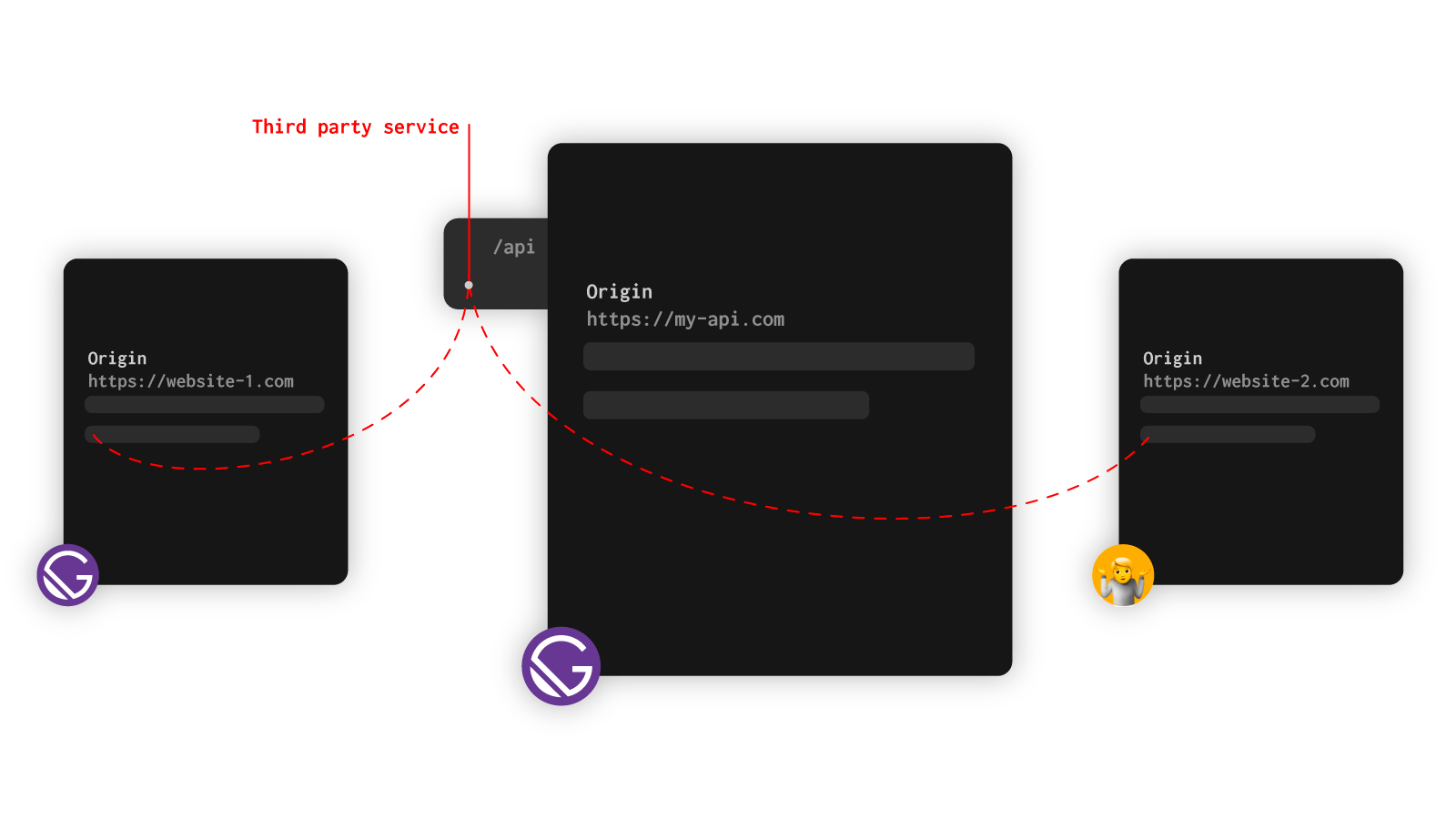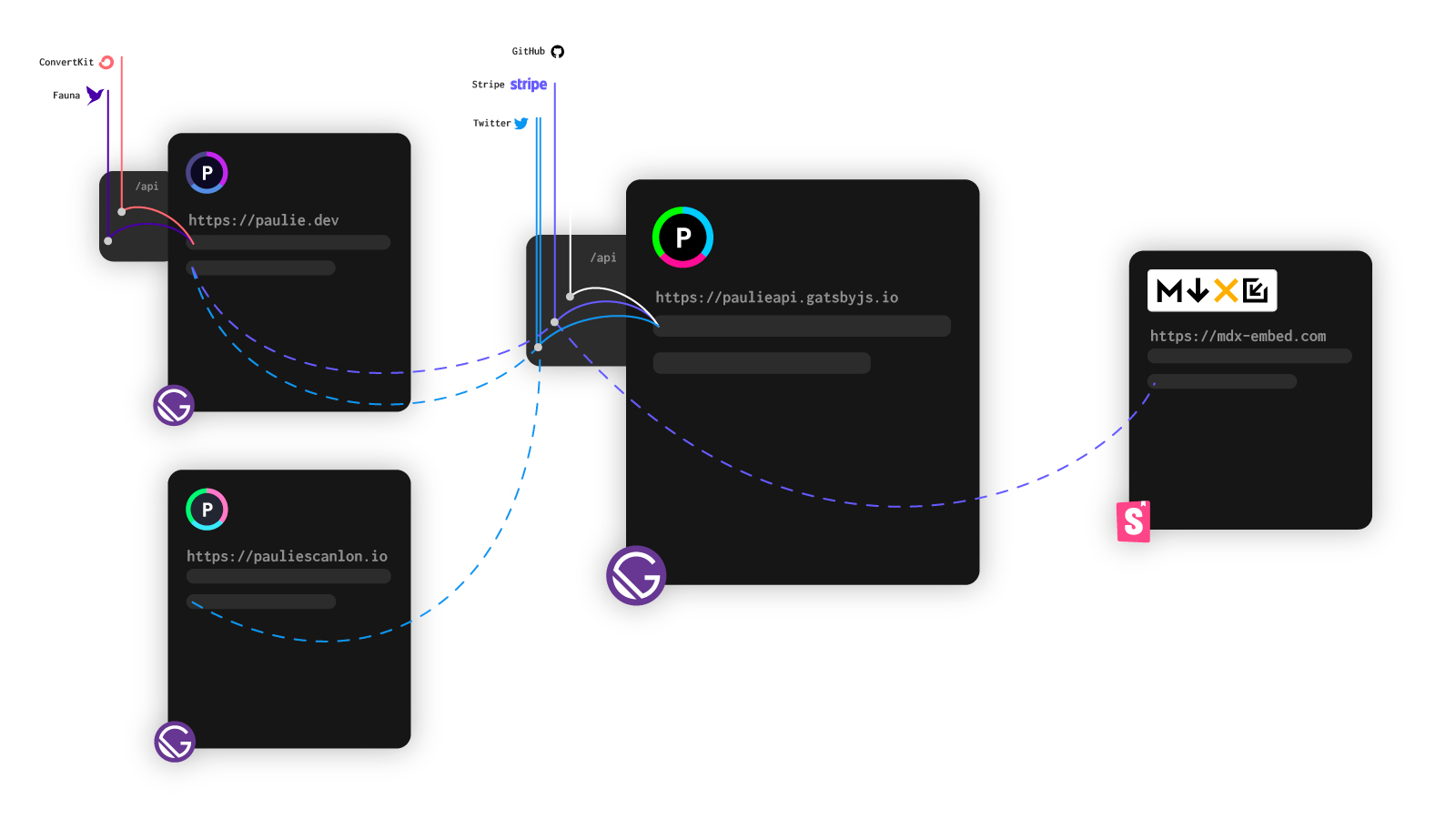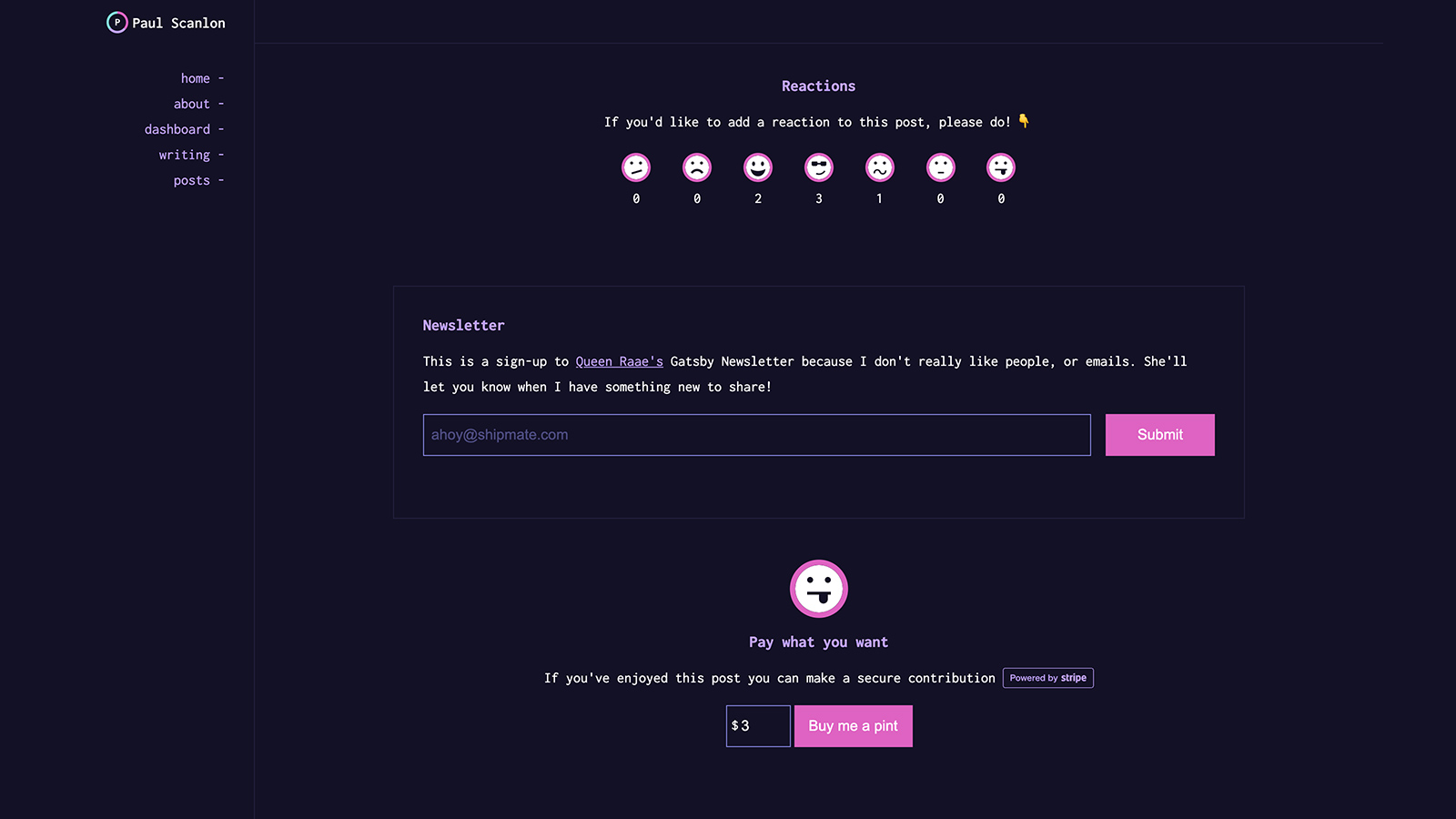Monetize Open-Source Software With Gatsby Functions And Stripe
In this article, I’ll be explaining how I’ve used Gatsby Functions and the Stripe API to enable secure “Pay what you want” contributions that help fund my open-source project MDX Embed.
Note: MDX Embed allows you to easily embed popular third-party media content such as YouTube videos, Tweets, Instagram posts, Egghead lessons, Spotify, TikTok and many more straight into your .mdx — no import required.
Gatsby Functions open up a whole new world for front-end developers as they provide a way to write and use server-side code without the hassle of maintaining a server. Uses for Serverless Functions range from Newsletter signups with ConvertKit, sending an email using SendGrid, saving data in a database like Fauna, or in this case, accepting secure payments using Stripe — the list is quite frankly endless!
Third-party services like the ones mentioned above will only accept requests that are sent server-side. There’s a number of reasons for this but using secure or private keys is typically one. Using these keys server-side means they’re not exposed to the client (browser) and can’t be abused, and it’s here where Gatsby’s Serverless Functions can help.
Gatsby provides the same logical approach to Serverless Functions as they do with pages. For example, website pages are located in src/pages and Serverless Functions are located in src/api.
Naturally, there’s slightly more to it than that but Gatsby’s developer experience is both logical and consistent, and I for one absolutely love that!
Same Origin FunctionsNine times out of ten when working with Serverless Functions you’ll be using them the way they were supposed to be used, E.g, your website uses its own functions. I call this usage Same Origin Functions or SOF’s for short. In this scenario both the Front-end and the API are deployed to the same origin, E.g www.my-website.com, and www.my-website.com/api, and communication between the two is both seamless and, of course, blazing fast!
Here’s a diagram to help illustrate what that looks like:

There are, however, at least two scenarios I’ve encountered where I’ve needed what I’ve been calling “Cross-Origin Functions” (or COF’s for short). The two scenarios where I’ve needed COF’s are as follows:
- I need server-side capabilities but the origin website can’t run Serverless Functions.
- The Serverless Function is used by more than one origin.
Note: Using Gatsby isn’t the only way to write Serverless Functions but more on that in a moment.
I first experimented with this approach in November 2020 before the release of Gatsby Functions and used Netlify Functions to provide server-to-server communications with the Twitter API and my Gatsby blog and commercial portfolio. You can read about this approach here: Use Netlify Functions and the Twitter API v2 as a CMS for your Gatsby blog.
After the release of Gatsby Functions in June 2021 I refactored the above to work with Gatsby Functions and here’s a little more information about how I went about it and why: Using Gatsby Functions as an abstracted API.
Here’s a diagram to better illustrate the general approach.

In the above diagram website-1.com is built with Gatsby and could have used Serverless Functions (but doesn’t) and website-2.com is built using something that has no Serverless Function capabilities.
Note: In both cases, they both need to use the same third-party service so it makes sense to abstract this functionality into a standalone API.
The example standalone API (my-api.com) is also a Gatsby site and has Serverless Function capabilities, but more importantly, it allows websites from other origins to use its Serverless Functions.
I know what you’re thinking: CORS! Well, sit tight. I’ll cover this shortly.
💰 Monetizing MDX EmbedThis was the situation I found myself in with MDX Embed. The documentation website for this project is built using Storybook. Storybook has no serverless capabilities but I really needed server-to-server communication. My solution? I created a standalone API called Paulie API.
Paulie API
Paulie API (like the example standalone API mentioned above) can accept requests from websites of different origins and can connect to a number of different third-party services, one of which is Stripe.
To enable Stripe payments from MDX Embed, I created an api/make-stripe-payment endpoint on Paulie API which can pass the relevant information from MDX Embed through its own Serverless Function and on to the Stripe API to create a “checkout”. You can see the src code here.
Once a checkout has been successfully created, the Stripe API returns a URL. This URL is passed back to MDX Embed which opens a new window in the browser where “customers” can securely enter their payment details on a Stripe webpage... and boom! You get paid!
Here’s a diagram that better illustrates how this works:

This approach is the same as mentioned above where https://mdx-embed.com sends requests to https://paulieapi.gatsbyjs.io which in turn connects to the Stripe API using server-to-server communication. But before we go too much further, it’s worth explaining why I didn’t use react-stripe-js.
react-stripe-js
react-stripe-js is a client-side (browser) toolkit that allows you to create Stripe checkouts and elements in your React project. With react-stripe-js you can set up a method for accepting payments securely without the need for server-side communication, but… and there is a but. I wanted to implement “Pay what you want” contributions. Allow me to explain.
Here’s a screenshot of the MDX Embed “product” that I’ve set up in my Stripe dashboard. Notice the price is $1.00.

If I’d used react-stripe-js to enable payments all “customers” would be asked to pay the same amount. In this case, it’s only $1.00 and that’s not gonna pay the bills is it!
To enable “Pay what you want” (e.g. a nominal amount chosen by a “customer”), you have to dive a little deeper and use server-to-server communication and send this amount to the Stripe API using a custom HTTP request. This is where I'm using a Gatsby Function and I pass in a dynamic value which will then be used to create the “checkout” experience and overwrite the price defined in my Stripe dashboard.
On MDX Embed, I’ve added an HTML <input type="number" /> which allows “customers” to set an amount rather than paying a predefined amount — if only all e-commerce were like this!
Here’s a little video I made that shows how MDX Embed, Paulie API and the Stripe API all work together:

You should see from the above diagram that http://paulie.dev also uses the Stripe endpoint. I’ve used the same approach as with MDX Embed to enable the “Pay what you want” functionality. It’s a small thing, but since the make-stripe-payment endpoint is already written and working, I can re-use it and avoid duplicating this functionality.
The http://paulie.dev website also has its own Gatsby Serverless Functions which I use to post user reactions to Fauna and capture Newsletter signups. This functionality is unique to this site so I haven’t abstracted this yet. However, if I wanted newsletter sign-ups on https://www.pauliescanlon.io, this would be the point where I migrate the function over to Paulie API.

This might seem like a step backwards to abstract your Serverless Functions. After all, one of the coolest things about going serverless is that both your front and back-end code are live in the same place. As I’ve shown, there are times where abstracting makes sense — to me anyway.
I’m certainly benefitting from using this approach and plan to further develop my API to provide more functionality to a number of my own websites, but if making money from open-source is of interest to you and your site isn’t built using Gatsby, this approach may well be the answer you were looking for.
Wanna get started with Gatsby Functions? Check out the Gatsby Functions docs to get going!
Further Reading
If you’re interested in learning more about Serverless Functions I’d recommend:
- Swizec Teller’s book, “Serverless Handbook For Frontend Engineers”
- Benedict’s Summer Functions course
- ...and, of course, the Gatsby docs
FuncJam
From August 17 to September 30, the Gatsby folks are running a community competition with some absolutely mega prizes to be won. If there’s still time, then pop on over to FuncJam and join in. Also, check out the Byte-size section of this blog post; it contains helpful videos and links to a number of example functions.
Thanks for reading, and if you’d like to discuss anything mentioned in this article, leave a comment below or find me on Twitter.